Displaying items by tag: kayakers
Kayakers Rescued by Wicklow RNLI Lifeboat Inshore Crew
Two kayakers were rescued by the Wicklow RNLI Inshore lifeboat volunteers on Sunday afternoon, 3rd September, after they got into trouble near Wicklow Head. The Inshore lifeboat was launched shortly after 4 pm after a member of the public walking at Wicklow Head made a 999 call to the Coast Guard reporting that kayakers were struggling to get ashore.
Alan Goucher, the Wicklow RNLI Helm, said they located two men on an inflatable kayak about half a mile southeast of Wicklow Head. The kayakers were trying to paddle against the tide but realised they were fighting a losing battle as the ebb tide was pushing them further south.
Fortunately, the kayakers did not require any medical attention and were safely landed ashore at the Glen Strand. Speaking after the call out, Wicklow RNLI Press Officer, Tommy Dover, stated that the good weather over the weekend had seen a big increase in leisure craft activity along the coast. However, inflatables can pose significant risks, as they are susceptible to changing tides, offshore winds, and currents. Therefore, he urged everyone to leave the inflatables at home and not bring them into the sea.
It is critical to remember that if you see someone in trouble in the water, call 112 or 999 and ask for the Coast Guard.
Kayakers Michelle O’Keane and Liam Hynes and swimmer Patricia Larkin were among Special Olympic athletes honoured by Mayor of Galway City Eddie Hoare at a reception earlier this week (July 17).
Also invited to the mayoral reception held on their return from the 2023 Special Olympic World Summer Games in Berlin were Galwegian athletes Katie Dillion (athletics), Henry Cloran (football), Kevin Hardiman (golf) and Máire Connolly (gymnastics).
“This group of incredible athletes brought excitement and pride our way in June, and brought home a fantastic haul of medals and participation ribbons for Team Ireland,” Mayor Hoare said.
 Pictured at the Galway City Mayoral Reception in their honour are Special Olympic athletes who represented Ireland at the Special Olympics World Games Berlin 2023, with gold, silver and bronze medals and participation ribbons. They are Katie Dillion (Athletics), Henry Cloran (Football), Kevin Hardiman (Golf), Máire Connolly (Gymnastics), Michelle O’Keane (Kayaking), Liam Hynes (Kayaking) and Patricia Larkin (Swimming), with Mayor Eddie Hoare, and Councillors Terry O’Flaherty, Frank Fahy, Clodagh Higgins, Donal Lyons and Martina O’Connor
Pictured at the Galway City Mayoral Reception in their honour are Special Olympic athletes who represented Ireland at the Special Olympics World Games Berlin 2023, with gold, silver and bronze medals and participation ribbons. They are Katie Dillion (Athletics), Henry Cloran (Football), Kevin Hardiman (Golf), Máire Connolly (Gymnastics), Michelle O’Keane (Kayaking), Liam Hynes (Kayaking) and Patricia Larkin (Swimming), with Mayor Eddie Hoare, and Councillors Terry O’Flaherty, Frank Fahy, Clodagh Higgins, Donal Lyons and Martina O’Connor
“You are an inspiring group of people, and I wish to congratulate you on your fantastic achievement as individuals, as Galwegians and as representatives of your country,” he said.
He also extended congratulations to the coaches and volunteers who made the athletes’ journey possible and shared in the pride of family and friends who supported them.
 Pictured at the Galway City Mayoral Reception on Monday 17 July 2023 in honour of the Special Olympic athletes on their return from the 2023 Special Olympics World Summer Games in Berlin, is Patricia Larkin (Swimming), signing the Mayoral Book
Pictured at the Galway City Mayoral Reception on Monday 17 July 2023 in honour of the Special Olympic athletes on their return from the 2023 Special Olympics World Summer Games in Berlin, is Patricia Larkin (Swimming), signing the Mayoral Book
The World Games in Berlin, Germany, took place from June 17th to 25th and was the largest inclusive sporting event in the world. Over 7,000 athletes from 190 nations competed in 26 different sports.
Team Ireland was represented by 73 athletes and over 60 volunteers and brought home a spectacular 24 gold, 23 silver and 29 bronze medals and three participation ribbons at the games.
Kitesurfer Injured in West Cork
The Irish Times reports that the man got into difficulty in high wins while kitesurfing in Courtmacsherry Bay.
He was taken by Irish Coast Guard helicopter to Cork University Hospital, where he is reportedly in a stable condition.
Two kayakers and two windsurfers were also rescued in the Kinsale area on the same day in treacherous windy conditions.
























































